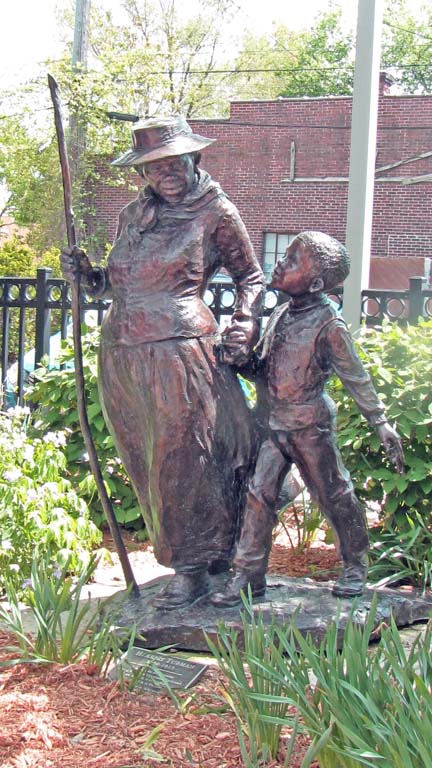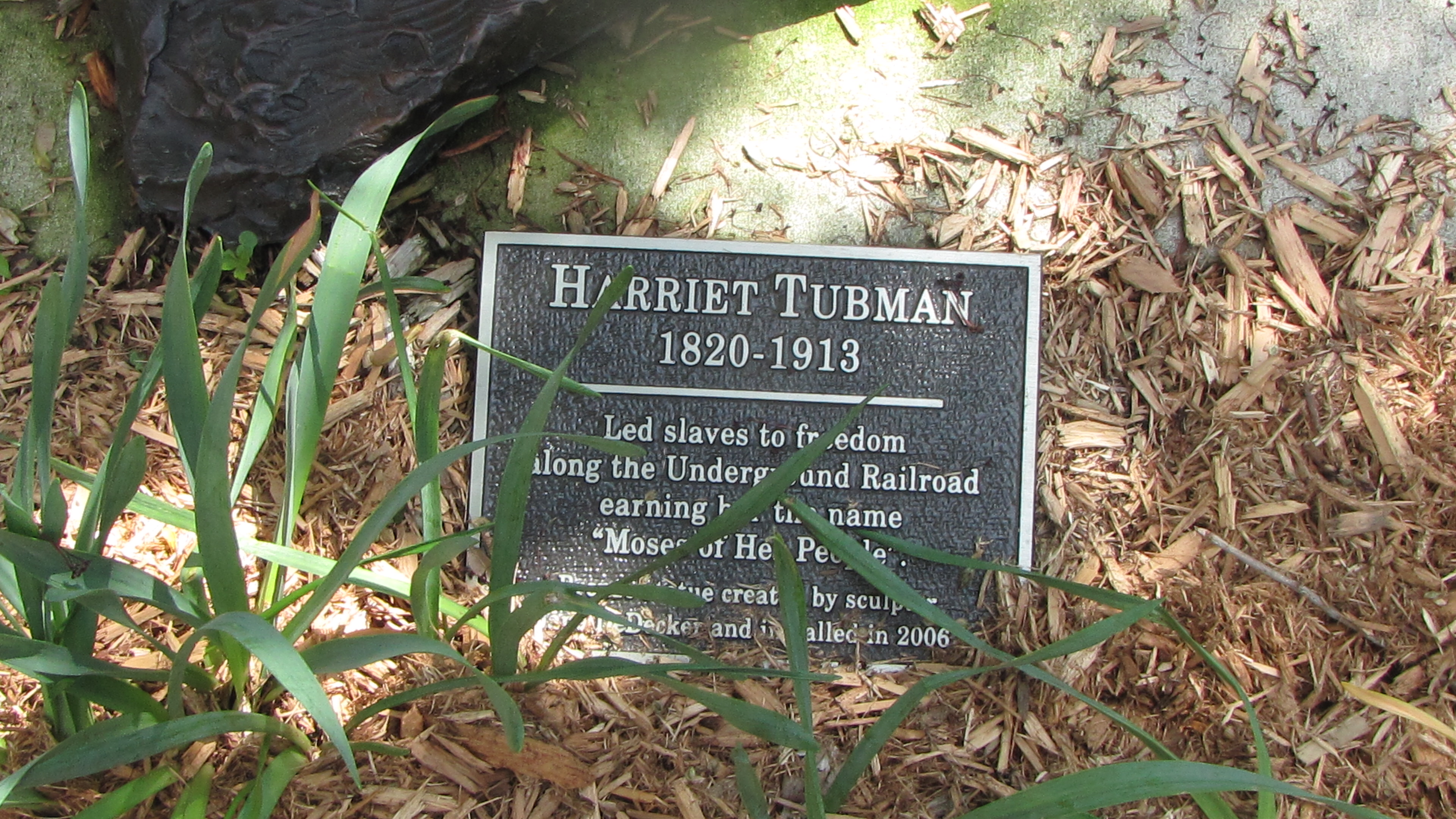

In 1819 or 1820, Araminta Ross was born into slavery in Dorchester County Maryland. Her owners were, apparently, quite rough with their chattels and she was injured when her master sought to physically discipline a slave that she sought to protect. At some point, she changed her first name to the one used by her mother. However, they approved of her marrying John Tubman in 1845. He was a free black man who lived nearby. Such marriages were challenging since the wife could be sold without regard to the husband’s wishes. Fearing that she would be sold and taken to the South where the demand for slaves was greater than in Maryland, Harriet Tubman decided to escape. She apparently located white people in Maryland who provided false identity papers. Should she be stopped in the North, she could present documents showing that she was a free black.
She made her way to Philadelphia, a city with a large black population. Fugitive slaves could easily assimilate into that population. Philadelphia was also home to William Still one of the most entrepreneurial and successful conductors on the Underground Railroad. Many slaves assumed that if they got to Philadelphia, they would find people such as William Still who would protect them or assist them in getting to Canada where their legal bondage would be ended.
Tubman made 19 trips to the South to free slaves. For this she earned the sobriquet “Moses.” She started by going to Maryland to help her sister and her sister’s children to freedom. On her third trip, she sought to bring her husband to the North. He had strongly opposed her efforts at self-emancipation. Perhaps she was not surprised to find that he had taken a new wife so he never joined her in the North. Later, she brought her parents out of the South and well as many other people.
Harriet Tubman moved to St. Catherine’s, Ontario, not far from Toronto, by 1851. An historical marker there now commemorates her great work as an Emancipator. Once residing in Canada, she became active in civic affairs and did what she could to help other members of her family escape from slavery. By 1857, she had relocated to Auburn, New York. There were quite a number of Quakers in northern New York at that time and they made sure that fugitive slaves were protected from slave catchers. The Fugitive Slave Act of 1850 called for the return of slaves who sought their freedom in the North and penalized those who aided escaping slaves. However, federal prosecutors found it very difficult to obtain convictions since most northerners strongly opposed slavery and many were glad to protect fugitives. Slave catchers who discovered properties in the North had to go to court to return them to slavery. Quite a few northern lawyers were skilled at preventing that. In addition, once slave catchers identified their prey, abolitionists frequently spirited the fugitive slaves to Canada or to a safe location in the states.
Harriet Tubman became friends with Auburn’s most famous resident, the very prominent politician William Seward. He had served with distinction in the Senate, had been governor of New York and was one of the most outspoken leaders of the abolitionist movement. He presumed that the Republican Party would nominate him for president in 1860 and most political pundits seconded that judgment. But he lost that nomination to a little known but politically shrewd Illinois lawyer. During this period just before the outbreak of the Civil War, Harriet Tubman made trips to Maryland and, perhaps, to other states to assist the escape of slaves. She became very well known for her work and developed into a spokesperson for the anti-slavery movement. John Brown visited Michigan when he was helping Midwestern slaves escape to Canada. I do not believe that Harriet Tubman used Michigan in any of her efforts.
During the Civil War, it was common for the wives and mothers of soldiers to follow the armies if conditions permitted. Wounded soldiers were often cared for by their relatives near the battlefield where they fell. Harriet Tubman followed the Union military in that capacity during the war.
She lived in Auburn, New York for almost one-half century after General Lee surrendered to General Grant in 1865. She published an autobiography in 1868 that became a popular book. She published another version of her life story about twenty years later. And then, in the 1890s, she became active in the suffragist movement. Thus, she is strongly identified as a key figure in both the abolitionist movement and in the early women’s rights movement in this nation. She lived long enough to become a well known and popular hero to many Americans. Many of the nation’s most prominent figures visited her in Auburn. Because of the current strong interest in the history of blacks in this nation and the history of the women’s movement, Harriet Tubman remains a well known and honored American leader.
This statue was sculpted by a young American, Jane DeDecker. After studying art at the University of Northern Colorado, she moved to France and studied tapestries and tapestry making for three years. She then returned to the United States and spent about a decade apprenticing with sculptors. She subsequently established her own business and works from Colorado.

Sculptor: Jane DeDecker
Date of Installation: 2006
Use in 2011: Public Art
Harriet Tubman website: http://www.harriettubman.com/
Sculptor’s website: http://www.janededecker.com/The-Artist.php
Photograph: Ren Farley; July 5, 2011
Description prepared: July, 2011
Return to Public Art and Sculpture
Return to Home Page